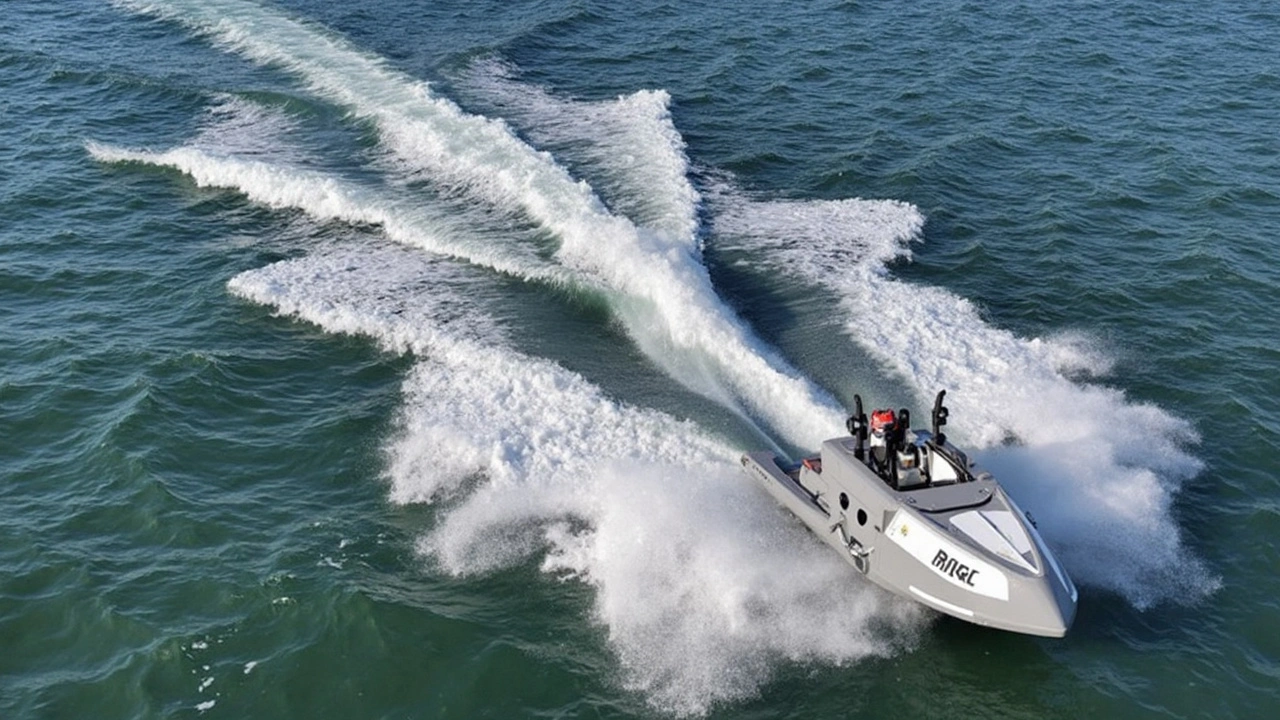- Chelsea vs Liverpool: 11 Iconic Matches That Defined a Premier League Rivalry Nov 17, 2025
- Ensuring Gender Equality: Commission for Gender Equality Observes Upcoming Elections May 29, 2024
- 2025 U.S. Open: How to watch Novak Djokovic vs. Taylor Fritz tonight — time, TV, and what’s at stake Sep 3, 2025
- Chelsea Faces Barrow in Carabao Cup: Predicted Lineup and Injury Updates Sep 24, 2024
- Hibernian Stuns Celtic with Impressive Victory in Scottish Premiership Clash Mar 5, 2025
MARS USV — what this tag covers and why it matters
MARS USV refers to unmanned surface vessels and projects using the MARS name or platform. On this tag page you’ll find news, tech updates, test reports, and real-world uses of autonomous boats that operate on the water without a crew. If you care about coastal mapping, fisheries monitoring, port security, or marine research, this tag groups stories that help you follow the fast-moving world of surface robots.
Why MARS USV matters now
Unmanned surface vessels are not sci-fi anymore. They’re practical tools for tasks that are risky, expensive, or slow when done by people. Think of routine bathymetry (mapping the sea floor), tracking illegal fishing, monitoring pollution, or surveying offshore infrastructure. USVs can reduce cost, speed up data collection, and lower risk to crews. For countries with long coastlines or busy ports, that adds up to better safety and faster decisions.
For African nations, USVs can be especially useful. They can support marine science with lower budgets, help small navies patrol larger areas, and assist researchers studying coastal erosion and fisheries. This tag highlights developments that affect local operations — new deployments, partnerships between universities and ports, regulation updates, and vendor tests relevant to the continent.
What you’ll find under the MARS USV tag
Expect a mix of quick news and deeper explainers. Typical posts include:
- Field trials — how a USV performed during a mission, with notes on range, sensors, and reliability.
- Technical updates — new sensor types, autonomy software, battery or communications advances.
- Policy and regulation — how coastal states, port authorities, and navies are approving or restricting USV use.
- Industry partnerships — startups, manufacturers, and universities teaming up to deploy or test vessels.
- Local impact stories — projects in African waters, training programs, and research collaborations.
When reading any article here, check for key details: vessel endurance (hours or nautical miles), sensor suite (sonar, cameras, LIDAR), autonomy level (remote control vs. fully autonomous), and any legal or safety limits mentioned.
Curious which technologies to watch? Keep an eye on improved autonomy stacks, hybrid power systems, and integrated satellite comms. Those features often decide whether a USV can handle long, distant missions or just short near-shore tasks.
Want to use this tag to stay sharp? Subscribe to updates, save posts that mention deployments in your region, and compare specs across tests. If you work in a port, research lab, or fisheries agency, these articles can help you ask the right questions when evaluating vendors or planning a pilot project.
Have a tip or local story about a MARS USV test near you? Send it to our newsroom. We cover developments that matter for African coasts, schools, and agencies—so your local angle can make a big difference for readers across the continent.
UK’s MARS Drone Boat Breaks Cover: The Fast-Tracked Revolution in Naval Warfare
- Katlego Sean Mahaye
- May 7, 2025
British firm SubSea Craft has unveiled the MARS USV—a highly adaptive, multi-mission drone boat built in just 100 days. Geared for naval warfare, it uses advanced sensors, supports UAV launches, and handles resupply missions autonomously, marking a leap in unmanned maritime defense.
